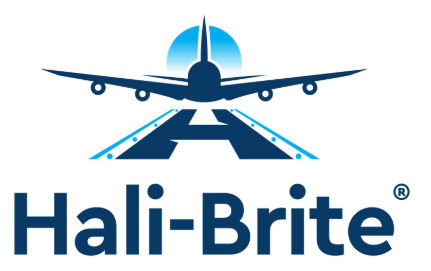Aerodrome beacons are a standard form of airport lighting used to tell pilots where they can find a place to land. While many might assume that they are merely airport flashlights, there are many types of aerodrome beacons. They have different light colors to clarify what type of airport they belong to and even flash their lights in specific patterns and frequencies to convey certain information.
If you need an aerodrome beacon, you can’t just purchase and install the first one that you find. You need to make sure that the one you are looking into meets the specifications set forward by the Federal Aviation Administration (FAA).
With that in mind, let’s dive into the different types of aerodrome beacons and how exactly they differ from one another.
Table of Contents
- Types of Aerodrome Beacons 101: Aeronautical Light Beacons Vs. Code Beacons
- Different Aerodrome Beacon Lights and Colors
- Aerodrome Beacon by Type of Airport
- Aerodrome Beacon by Class
- Wrapping Up
Types of Aerodrome Beacons 101: Aeronautical Light Beacons Vs. Code Beacons
There are two main types of beacons: aeronautical light beacons and code beacons.
Aeronautical Light Beacon
This type is what we traditionally think of when looking at airport beacons. They are a form of visual navigational aid (NAVAID) that uses flashes of light and color to indicate the location of airports, airfields, landmarks, heliports, or obstructions. They are used to guide and warn pilots on their flights. They also use specific colors in their flashing to indicate which location out of the previously mentioned they are heading.
Code Beacon
On the other hand, this type identifies airports and landmarks. They also use flashes and colors to indicate the type of airport or landmark, but the frequency of their flashing sets them apart from the former. Code beacons use international Morse code to flash the three to four character identifiers of airports. They do so at a frequency of six to eight times per minute.
Both use the same color scheme to differentiate between land and water airports, green and white for land and white and yellow for water.
Different Aerodrome Beacon Lights and Colors
Aerodrome beacons can have two or three lights of different colors. The number of lights and its combined colors reveal the location’s type, whether it’s an airport, a landmark, or a facility.
Two Lights
-
- Land Airport – White and Green (though most land airports can use only green as well)
- Water Airport – White and Yellow (though most seaports can use only yellow as well)
- Landmark/Navigational Point – White and Red
Three Lights
-
- Heliports – Green, Yellow, and White
- Hospitals and Emergency Services Heliports – White, Green, and Amber
- Military Airports – White, White, and Green
Although military airports use the same color combination as the two light land airports, they have two flashes of white in between the flashes of green to highlight their difference.
https://www.halibrite.com/wp-content/uploads/2023/03/Different-Aerodrome-Beacon-Lights-and-Colors-576×1024-1.webp” alt=”Infographic showing aerodrome beacon types and lighting colors” width=”576″ height=”1024″ />
Aerodrome Beacon by Type of Airport
There are also different beacon models and specifications designated by the FAA depending on the type of airport they will be operating on and their intensity, with two designations for civilian airports, two for heliports, two for seaplane bases, and one for military airports. These are:
L-801A and L-802A – Civilian Airport Beacons
The L-801A is designed to be a medium intensity beacon, while the L-802A is its high-intensity counterpart. These beacons’ lights are green and white.
These beacons have a flash frequency of 22 to 26 flashes per minute (FPM).
L-801H and L-802H – Heliport Beacons
The H variation of beacons is for heliports, with three lights flashing green, yellow, and white. The 801 is medium intensity, and the 802 is high intensity.
These beacons have a flash frequency of 33 to 39 FPM.
L-801S and L-802S – Seaplane Base Beacons
The S variation of beacons is used for water airports and uses a white and yellow color scheme. Like before, the 801 model is medium intensity while the 802 is high intensity.
These beacons have a flash frequency of 22 to 26 FPM.
L-802M – Military Airport Beacon
Finally, the lone L-802M beacon is the military airport beacon, having three colored lights and being exclusively high intensity.
These beacons have a flash frequency of 16 to 20 FPM.
Aerodrome Beacon by Class
The last distinction between aerodrome beacons is their class, which indicates what temperature conditions they can operate. These classes are:
Class 1
The Class 1 airport beacons can operate within a temperature range of -22 to 131 degrees Fahrenheit.
Class 2
The Class 2 airport beacons can operate within a temperature range of -67 to 131 degrees Fahrenheit.
Both share the same maximum temperature limit, but Class 2 beacons can withstand colder temperatures.
Wrapping Up
For those who would like to purchase an airport beacon, it’s crucial to know all the types of aerodrome beacons beforehand to avoid buying the wrong product. If you need assistance, Hali-Brite is just one call away. Please contact us to discuss our different product offerings. We are more than happy to help!
